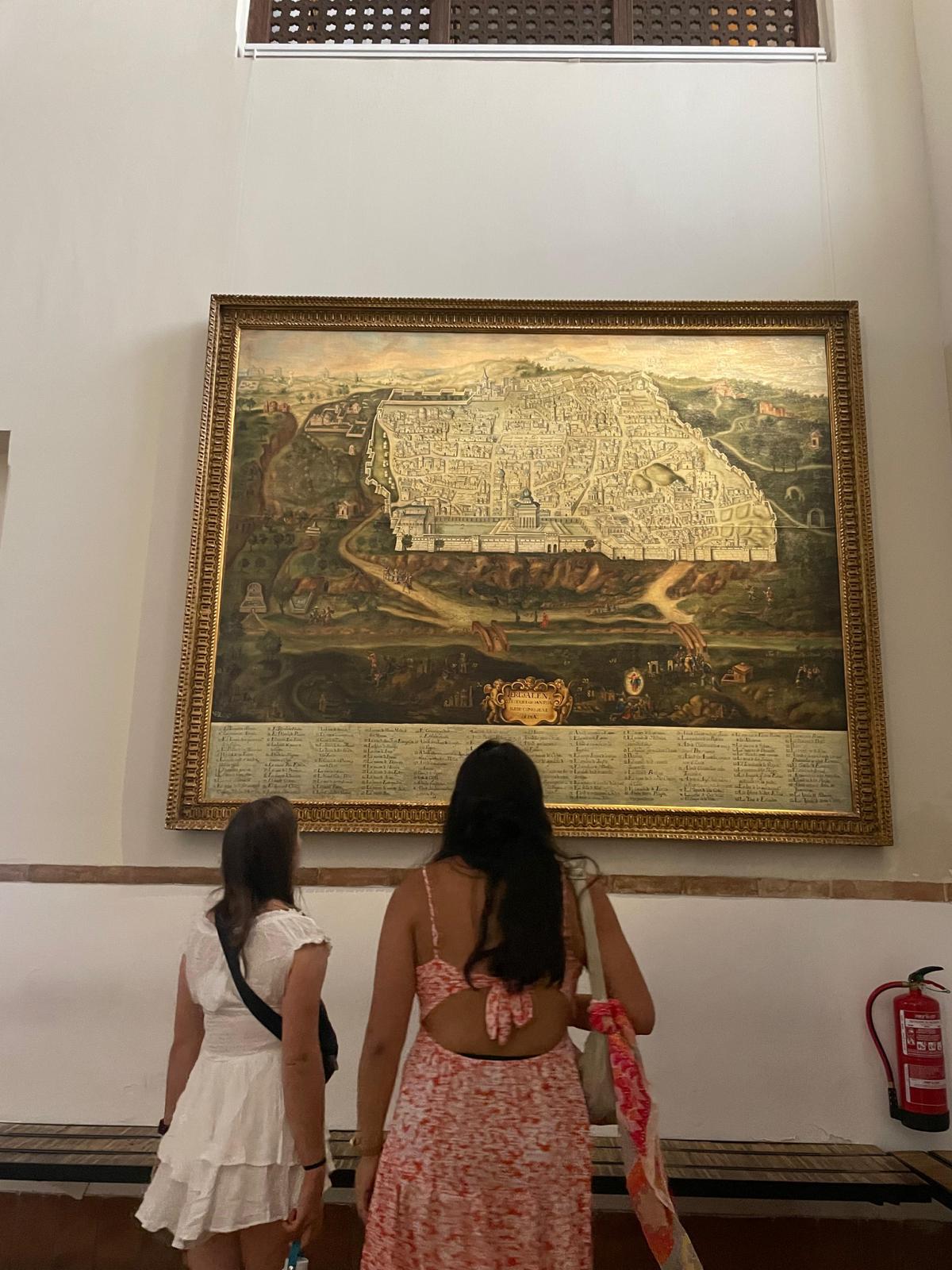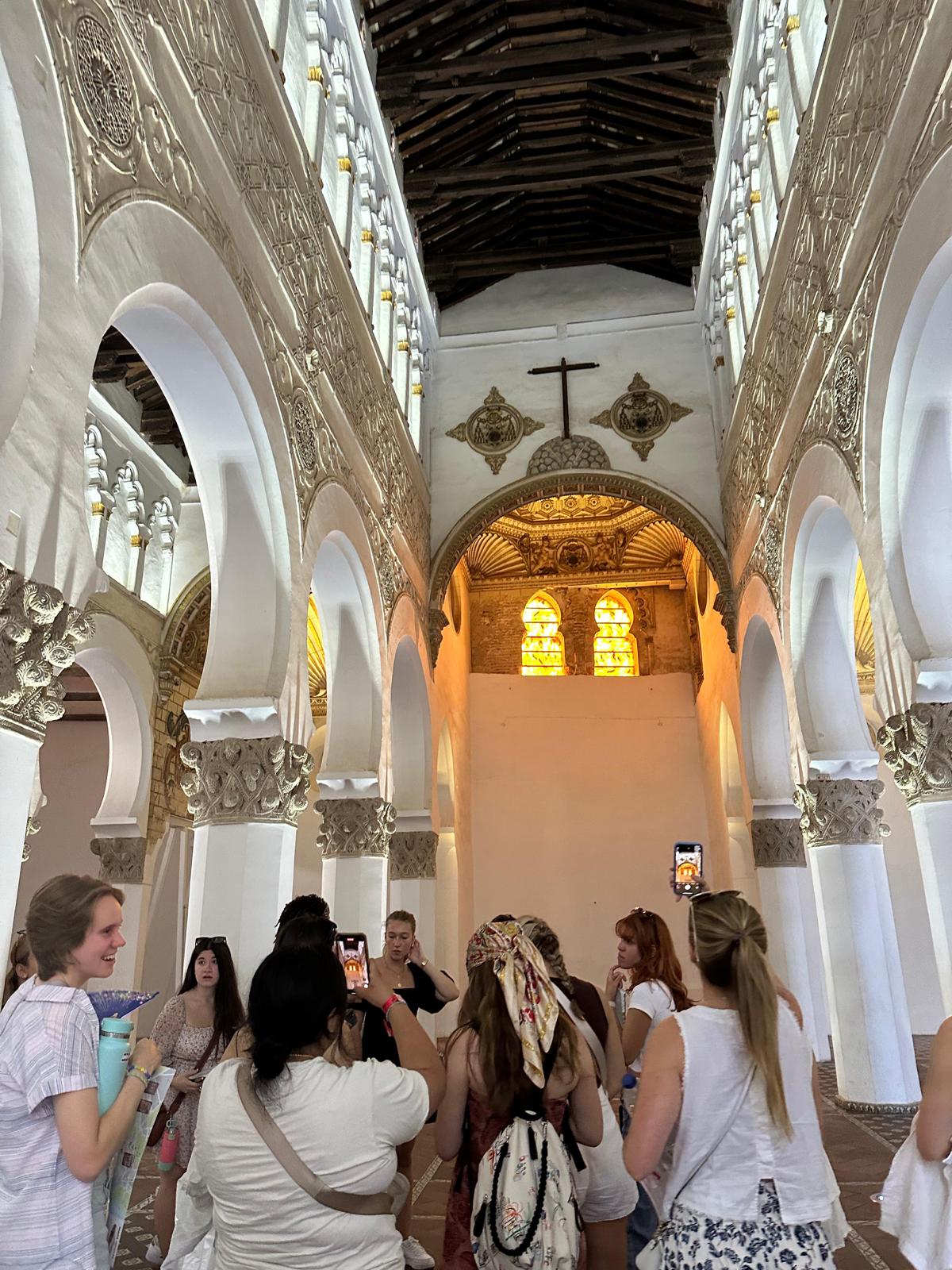Written By: Sami Cavanaugh ’25 (Session 2)
This past weekend, our class traveled to Toledo to explore the various identities that make up Spanish history. To do this, we visited various places of worship that helped our understanding of the weaving between Christian, Jewish, and Muslim religions. In previous classes in the days prior, we studied the deep history between the three religions, which display their overlapping influence and prominence in Spain. We learned that these groups were able to tolerate each other for many years in “convivencia,” a term to describe the coexistence between the religions. Yet, this tolerance of other religions fluctuated and depended upon the King in charge. For example, rulers such as King Peter of Castile, exemplify the acceptance of the Jewish community in his allowance of the Synagogue of El Tránsito’s construction in around 1357. Less than a hundred years later, extreme intolerance of other religions emerged under King Ferdinand and Queen Isabella’s reign. In 1492, they expelled all Jews from Spain and forced them to either convert to Christianity or leave Spain completely. Homes, businesses, synagogues and entire communities were abandoned. Empty synagogues such as the Synagogue of El Tránsito were transformed into churches, hospitals, military barracks, and museums. Aspects of the Christian religion can now be seen in this synagogue through the architecture.
While visiting the Synagogue of El Tránsito this past weekend, Professor Juan, gave us a detailed description of the architectural meaning and history of how this synagogue has evolved over the years. He explained that King Peter of Castile allowed this synagogue to be built in appreciation of ha-Levi Abulafia, his treasurer. Inside, crests line the walls in Hebrew to thank Peter for allowing the creation of the synagogue. Wood roofing, infinity horseshoe arches, and ceramic tiles reflect the influence of Muslims and Jews that stayed after the conquest. This type of architecture is known as Mudéjar art. Many of the churches, synagogues, and mosques of Toledo display this architecture due to the overlapping of religions across centuries. It was not until 1964 that the Spanish government retook the museum to return it to the Safrarid people. The Synagogue of El Tránsito is now a part of the Sefardic Museum in order to preserve religious history.

This past weekend was my first time entering a synagogue. Growing up Catholic, I could not help but compare it to what I was most familiar with, churches. I noticed that there were no saints or people lining the walls. There were no pews or stained glass windows lighting up the altar. Instead, the walls were less flashy designs and often made with plaster. Professor Juan informed us that this is because Jews do not wish to portray fancy or luxury in their place of worship, but instead, a commitment to divinity. The temple is meant solely for praying and practice. He described how there used to be different places for men and women to worship in the synagogue. Another detail I learned was that all synagogues face east towards the promised land, Israel.
Overall, looking at the origins of Jewish history has given me a deeper respect for the culture and traditions.


